
Primula is a genus of mainly herbaceous flowering plants in the family Primulaceae. They include the familiar wildflower of banks and verges, the primrose. Other common species are P. auricula (auricula), P. veris (cowslip), and P. elatior (oxlip). These species and many others are valued for their ornamental flowers. They have been extensively cultivated and hybridised. Primula are native to the temperate Northern Hemisphere, south into tropical mountains in Ethiopia, Indonesia, and New Guinea, and in temperate southern South America. Almost half of the known species are from the Himalayas.

The Primulaceae, commonly known as the primrose family, are a family of herbaceous and woody flowering plants including some favourite garden plants and wildflowers. Most are perennial though some species, such as scarlet pimpernel, are annuals.
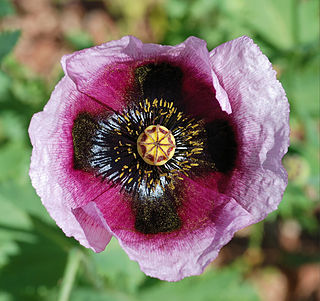
Papaver is a genus of 70–100 species of frost-tolerant annuals, biennials, and perennials native to temperate and cold regions of Eurasia, Africa and North America. It is the type genus of the poppy family, Papaveraceae.
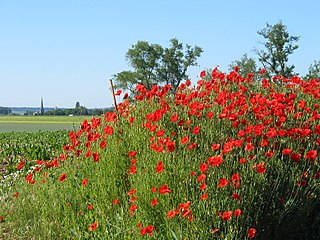
The Papaveraceae are an economically important family of about 42 genera and approximately 775 known species of flowering plants in the order Ranunculales, informally known as the poppy family. The family is cosmopolitan, occurring in temperate and subtropical climates, but almost unknown in the tropics. Most are herbaceous plants, but a few are shrubs and small trees. The family currently includes two groups that have been considered to be separate families: Fumariaceae and Pteridophyllaceae.

Primula sect. Dodecatheon is a section of herbaceous flowering plants in the family Primulaceae. Primula species in this section were formerly considered in a separate genus, Dodecatheon. The species have basal clumps of leaves and nodding flowers that are produced at the top of tall stems rising from where the leaves join the crown. The genus is largely confined to North America and part of northeastern Siberia. Common names include shooting star, American cowslip, mosquito bills, mad violets, and sailor caps. A few species are grown in gardens for their showy and unique flower display.

Androsace, commonly known as rock jasmine, is a genus of flowering plants in the family Primulaceae, second only to Primula in the number of species. It is predominantly Arctic–alpine, with many species in the Himalayas, the mountains of central Asia, the Caucasus, and the southern and central European mountain systems, particularly the Alps and the Pyrenees.

Primula vulgaris, the common primrose, is a species of flowering plant in the family Primulaceae, native to western and southern Europe, northwest Africa, and parts of southwest Asia. The common name is primrose, or occasionally common primrose or English primrose to distinguish it from other Primula species also called primroses. None of these are closely related to the evening primroses.

Primula farinosa, the bird's-eye primrose, is a small perennial plant in the family Primulaceae, native to Northern Europe and northern Asia, and (rarely) farther south at high altitudes in the mountains of southern Europe. This primrose thrives on grazed meadows rich in lime and moisture.
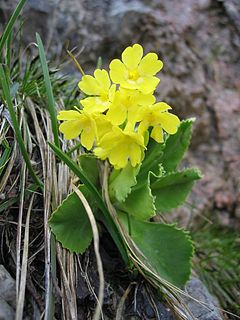
Primula auricula, often known as auricula, mountain cowslip or bear's ear, is a species of flowering plant in the family Primulaceae, that grows on basic rocks in the mountain ranges of central Europe, including the western Alps, Jura mountains, the Vosges, the Black Forest and the Tatra Mountains.
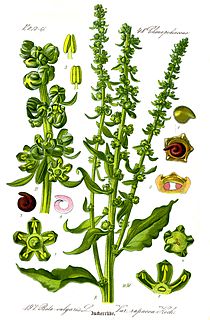
Beta is a genus in the flowering plant family Amaranthaceae. The best known member is the common beet, Beta vulgaris, but several other species are recognised. Almost all have common names containing the word "beet". Wild Beta species can be found throughout the Atlantic coast of Europe, the Mediterranean coastline, the Near East, and parts of Asia including India.

Primula meadia, the shooting star or eastern shooting star, is a species of flowering plant in the primrose family Primulaceae. It is native to the eastern United States and Canada, spanning north from Manitoba and New York, south to Texas and Florida.

Pieter B. Pelser is a Lecturer in Plant Systematics and the curator of the herbarium at the University of Canterbury in Christchurch, New Zealand. One research interest is the evolutionary history of the tribe Senecioneae, one of the largest tribes in the largest family of flowering plants. He wrote the most recent attempt to define and delimit this tribe and its problematic founding species Senecio. He also studies insects that eat these plants (Longitarsus) which contain pyrrolizidine alkaloids and what makes them choose which plants they eat.

The Betoideae are a small subfamily of the flowering plant amaranth family, Amaranthaceae sensu lato. Commonly known members include beet, sugar beet, chard, and mangelwurzel, which all are cultivars of Beta vulgaris.
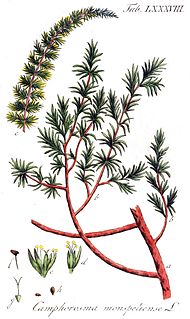
Camphorosmeae is a species-rich tribe of the Amaranthaceae, formerly Chenopodiaceae, with 20 genera and about 179 species. It is classified as a single tribe of subfamily Camphorosmoideae.
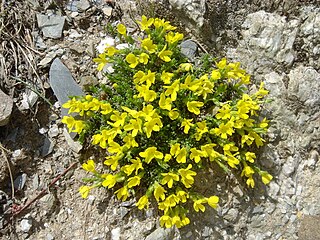
Androsace vitaliana is a species of plant in the primrose family, Primulaceae. It was previously known by the synonym Vitaliana primuliflora. Native to the high mountains of Europe, it is cultivated as an alpine garden plant, being considered easy to grow in well drained soil in a sunny position.

Primula frenchii, French's shootingstar, is a species of flowering plant in the family Primulaceae. It is native to the central and southern United States, in southern Illinois, Indiana, Kentucky, Arkansas, and Alabama. It grows in moist, shady areas such as ledges near streams and under sandstone cliffs.

Primula secundiflora, the second-flowered primrose, is a species of flowering plant in the family Primulaceae, native to western China ., where it inhabits wet places at 3,200–4,800 m (10,500–15,700 ft). It belongs to the Candelabra group of primulas. Growing to 80 cm (31 in) tall, it is a semi-evergreen perennial bearing clusters of nodding deep red flowers at the top of erect stems.
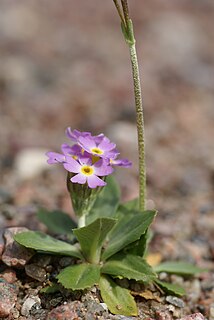
Primula stricta, also known as the strict primrose, is a species of flowering plant in the family Primulaceae.

Primula algida is a species of flowering plant within the family Primulaceae. This species was first described by Michael Friedrich Adams.
Primula aureata is a species of flowering plant from the family Primulaceae.


















